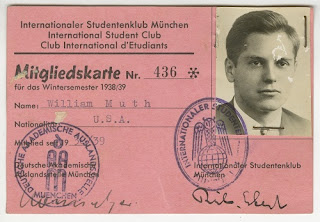The William L. Clements Library is not only home to a world-class collection of manuscripts, books, maps, and graphics, it’s also home to a staff of voracious readers. Our passion for all things Clements-related carries over even when we happily have our noses buried in modern books. We’ve compiled a list of books recently read and recommended by the staff, and have paired them with items from our collections that were brought to mind while enjoying them. Hopefully you’ll find something worth exploring—whether it’s recently published or it’s a little more antiquated and requires a visit to the Clements.
In June, Kevin Graffagnino, Director of the Clements Library, delivered a lecture for the Book Club of California on “Murder Most Foul.” Preparing for this talk put him on a “true crime and crime fiction” reading jag. He reports, “I’m making my way through all of James Lee Burke’s novels, courtesy of William L. Clements Library and good personal friend Bill Sikkenga; I’ve started “Murder Will Out”: The Detective in Fiction (New York: Oxford University Press, 1989) by T. J. Binyon, which the New York Times described as ‘destined to be a classic’; and I’m dipping in and out of Bruce F. Murphy’s The Encyclopedia of Murder and Mystery (New York: St. Martin’s Minotaur, 1999) for its useful and interesting details and summaries. All, I hope, will sharpen my appreciation for our James V. Medler Crime Collection, which is one of the best pre-1900 American true-crime libraries anywhere.”
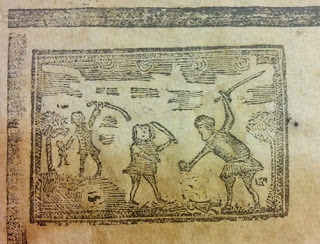 |
| A gruesome woodcut illustration from a 1782 broadside in the James V. Medler Crime Collection, A Poem, Occasioned by the Most Shocking and Cruel Murder that Ever was Represented on the Stage; or the Most Deliberate Murder that Ever was Perpetrated in Human Life. |
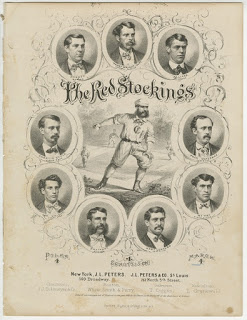 |
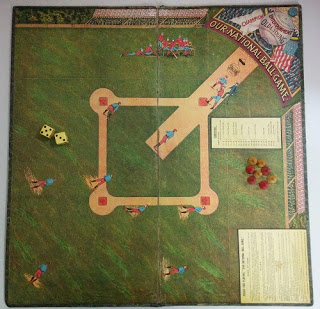 |
| Charles Kinkel, The Red Stockings’ March (New York: J. L. Peters, 1869) and Our National Ball Game, an 1886 board game by McGill & Delany, are just two examples of baseball-related items in our Graphics Division. | |
Anne Bennington-Helber, from our Development team, has also found herself enjoying a sports-related history. She recommends picking up Daniel Brown’s The Boys in the Boat: Nine Americans and their Epic Quest for Gold at the 1936 Berlin Olympics (New York: Viking, 2013). The tale of how this young group of University of Washington men won the gold medal in rowing is a compelling one, and the Clements has a nice selection of items that speak to the long-standing interest in rowing. Take, for example, this illustration from Donald Walker’s British Manly Exercises: In Which Rowing and Sailing are Now First Described… (Philadelphia: Thomas Wardle, 1836). Of course, rowing isn’t inherently “manly,” as Anne has herself shown by taking up the sport this summer.
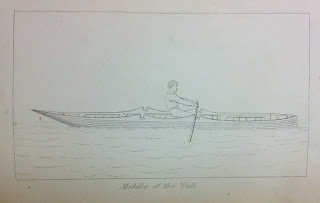 |
| British Manly Exercises includes a series of illustrations demonstrating how to properly row. |
A number of Clements staff have been reading histories and novels about World War II. Diana Sykes, Head of Reader Services, participates in two book clubs during her free time, one of which is currently reading Erik Larson’s In the Garden of Beasts: Love, Terror, and an American Family in Hitler’s Berlin (New York: Crown, 2011). The story follows the U.S. ambassador to Germany, William E. Dodd, delving into his and his family’s political, social, and romantic forays among Berlin’s elite. While the Clements’s primary focus remains on early American history, we do have a robust and growing collection of World War One and World War Two papers. Our William M. Muth Collection, in the Duane Norman Diedrich Collection, documents Muth’s time as an American student in Heidelberg in 1939 where he witnessed rising anti-Semitism and militarization. On August 24th, 1939, Muth was advised to leave Germany, and that same day the woman he was courting expressed her love for him for the first time. These intertwined stories of military upheaval and personal desire parallel some of the themes in Larson’s latest book.
 |
|
| William M. Muth’s student I.D. from 1939 and a photo from when he served as an aviator with the U.S. Navy aboard the USS Curtis in the Pacific. | |
As this sampling of recommended books suggests, the Clements’s staff has widespread interests. The Clements Library’s rich and varied collections shed light on these topics, and so many more. Check back next week to see how, as we continue to explore our summer reading list.

